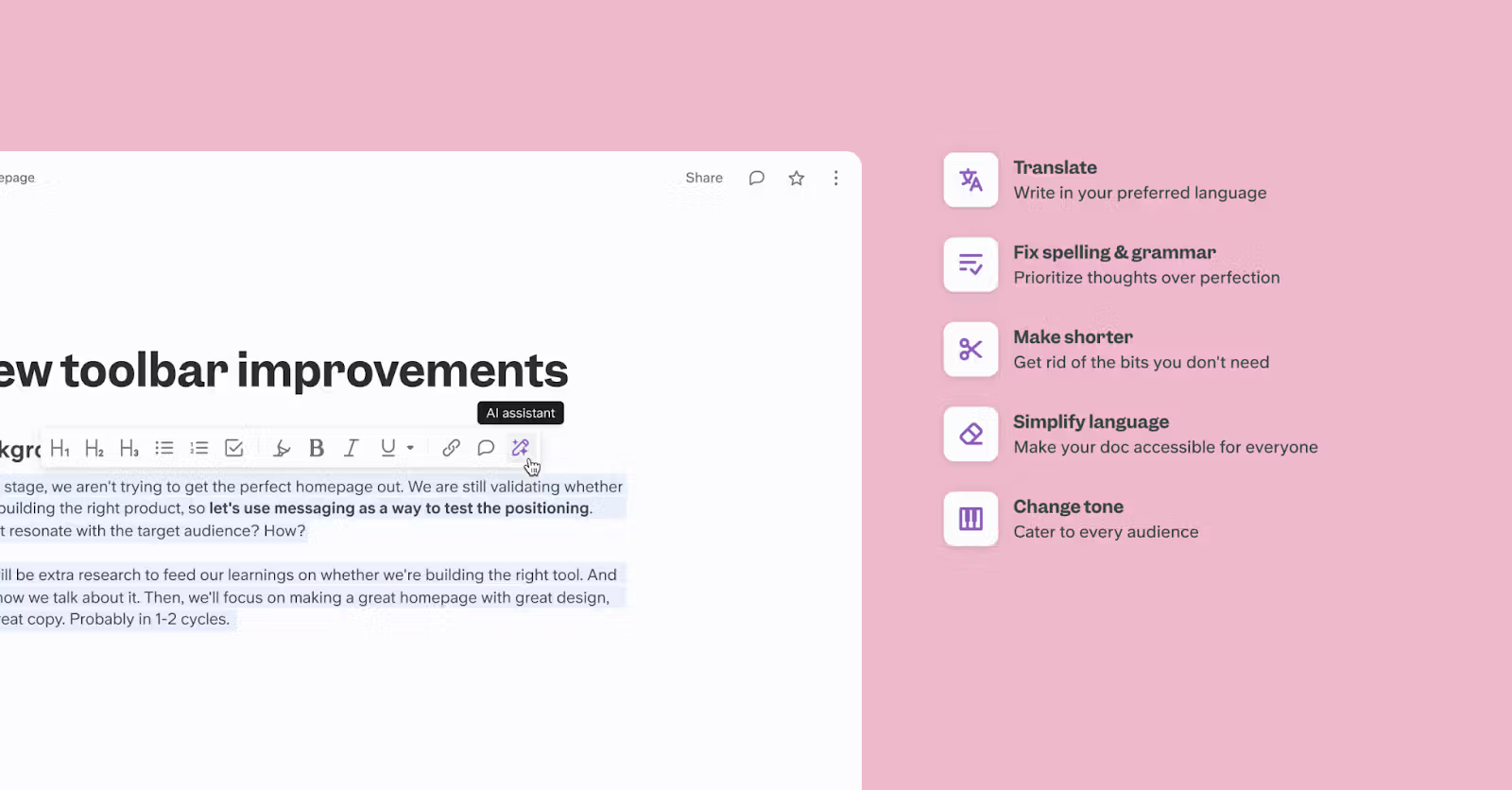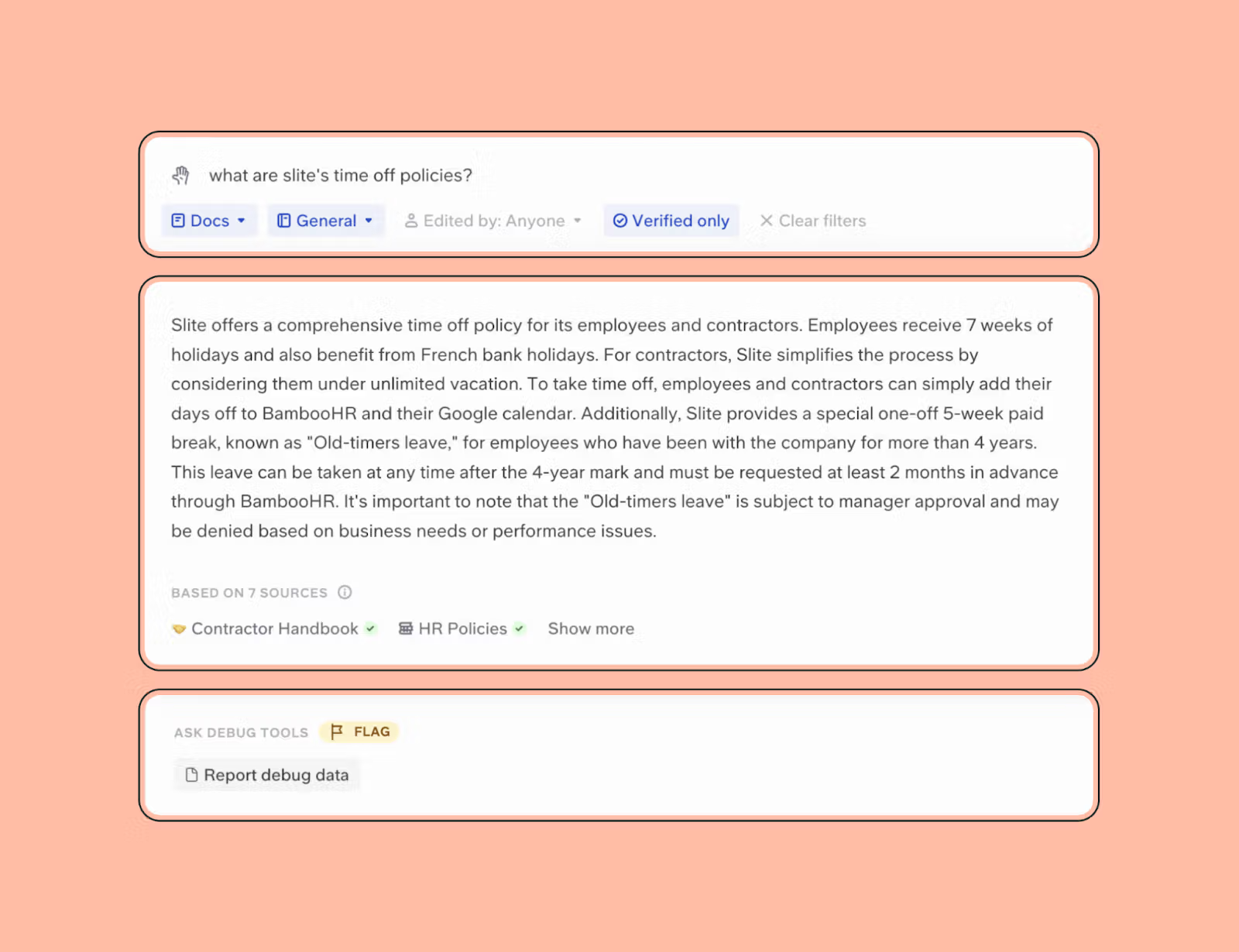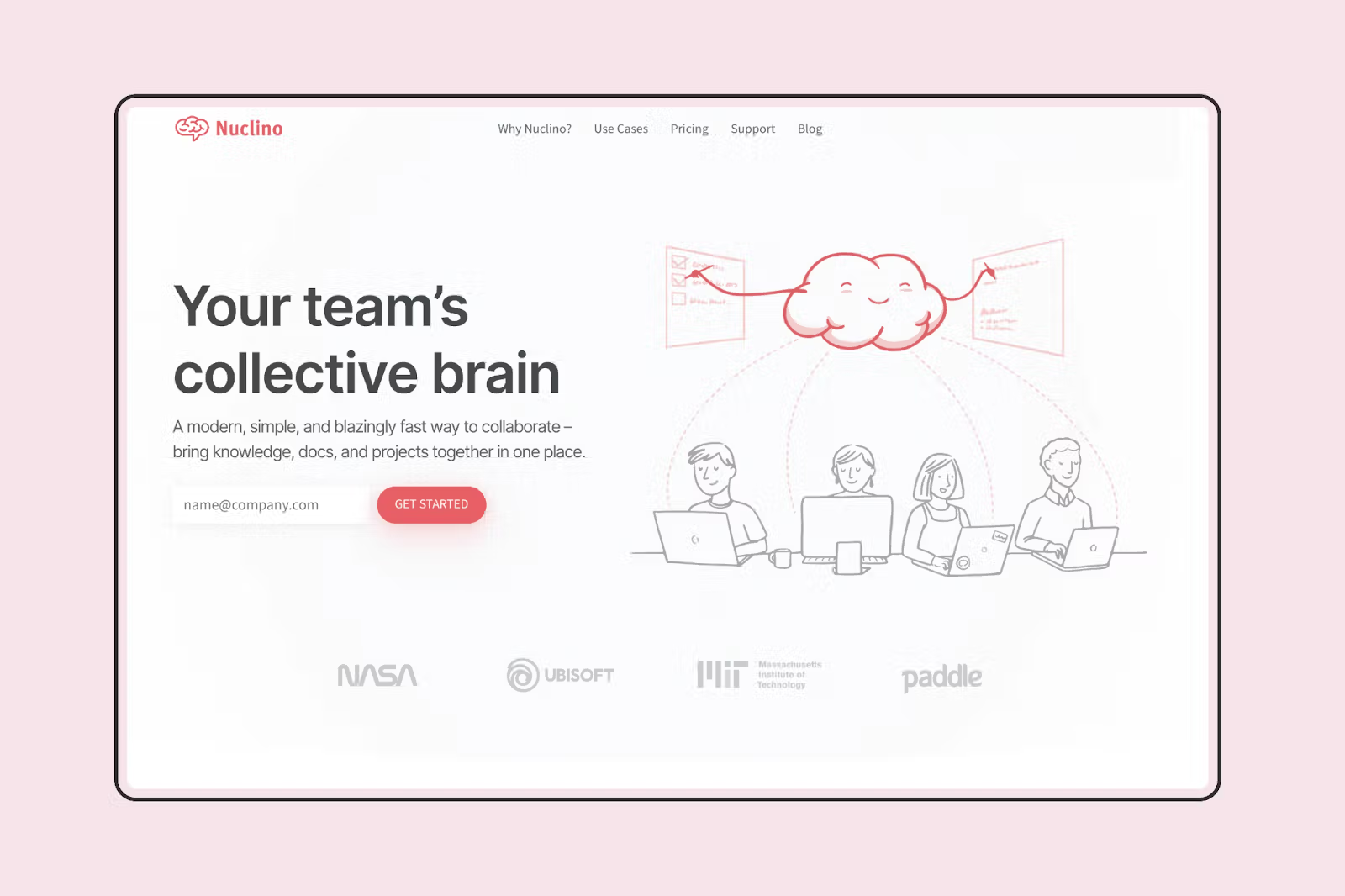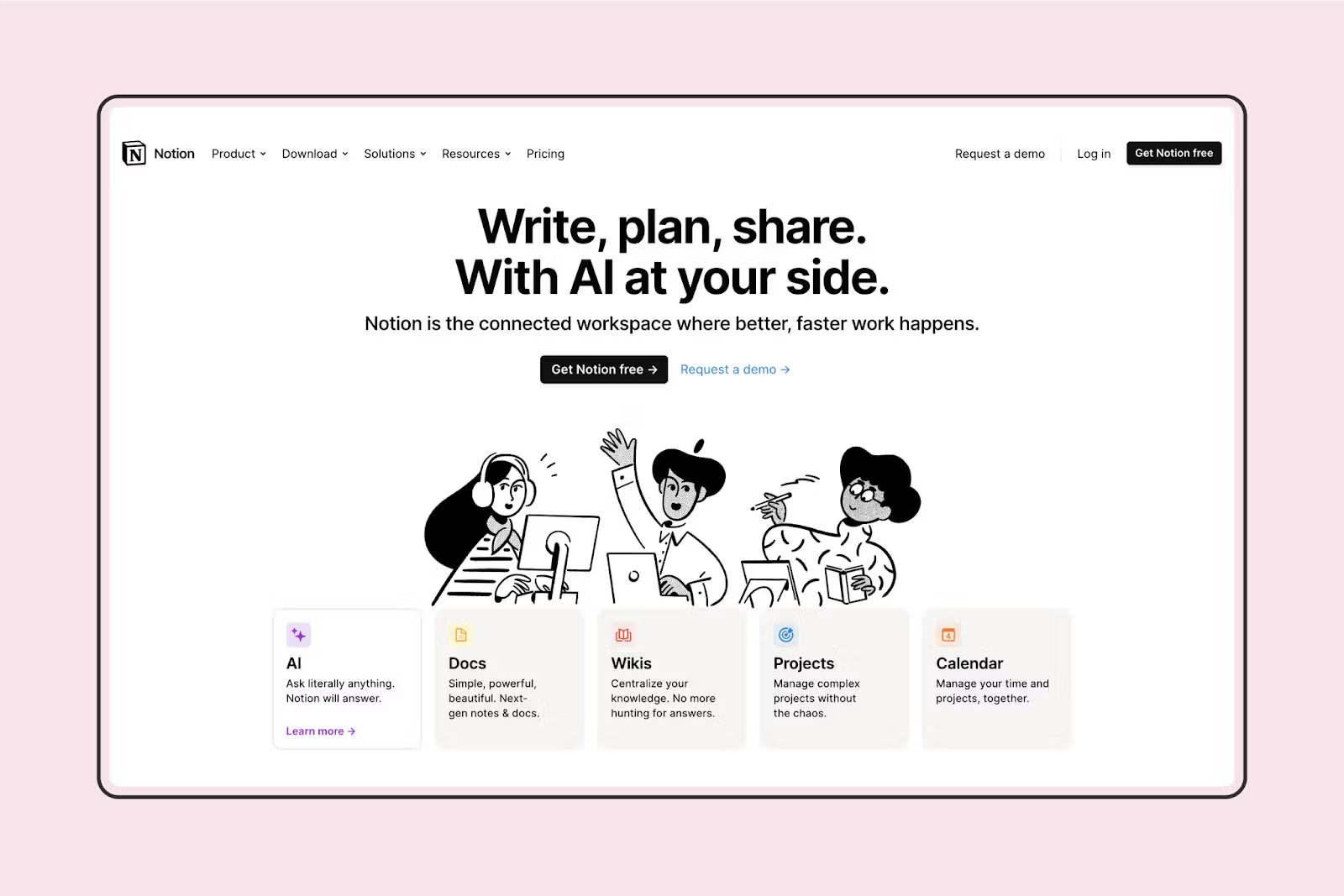The closure of Almanac, set for January 31, 2025, means that current users need to find a new solution. Here's why it's crucial to start looking for an alternative now:
- Data Migration: You'll need time to export your data and import it into a new system.
- Learning Curve: Your team will require time to adapt to a new tool.
- Continuity: Ensuring uninterrupted workflow is vital for your team's productivity.
- Feature Parity: Finding a tool that offers similar or better features than Almanac is important.
- Future-Proofing: Choosing a stable, well-supported alternative can prevent similar disruptions in the future.
In this article, we'll explore the 5 best options to help you transition smoothly and continue to support your team's collaborative efforts.
What Makes a Good Almanac Alternative?
When looking for a new tool to replace Almanac, it's important to find one that fits your team's needs. Here are some key things to consider:
Easy to Use
The new tool should be simple to understand and use. If it's too complicated, your team might not want to use it. Look for a clean, straightforward design that doesn't require a lot of training.
Good for Teamwork
Your new tool should make it easy for team members to work together. This means people should be able to edit documents at the same time, assign tasks to each other, and see changes right away. It’s also helpful if the tool lets you leave comments or tag team members.
Keeps Track of Changes with Revision History
It’s important to be able to see who changed what and when. A good tool will keep a revision history of all changes and let you go back to older versions if needed. This helps avoid mistakes and keeps everyone
Organizes Information Well
The tool should help you keep your documents and information tidy. Look for features like folders, tags, or categories that make it easy to find what you need quickly.
Works with Other Tools
Your new tool should play nicely with the other software your team uses. This could mean connecting with your email, calendar, or project management tools. The more it can work with your existing setup, the better. It should also integrate with popular collaboration tools like Microsoft Teams to enhance communication and team productivity.
Can Grow with Your Team and New Team Members
As your team gets bigger or your needs change, your tool should be able to keep up. Look for options that offer different plans or features that you can add as you grow.
Keeps Your Information Safe
Security is important. Make sure the tool you choose keeps your data safe and private. Look for features like password protection and the ability to control who can see or edit different documents. Ensuring data security can help improve customer service by protecting sensitive information and maintaining customer trust.
Easy to Move Your Stuff
At some point, you might want to switch tools again or back up your data. Choose a tool that makes it easy to export all your files in a format you can use elsewhere.
Offers Good Support
If something goes wrong or you have questions, you want to be able to get help quickly. Look for a tool with responsive customer support, whether through chat, email, or phone.
Fits Your Budget
While it's not all about price, you need to find a tool that your team can afford long-term. Compare the costs of different options and think about what features you're getting for your money.
Now, based on your specific use cases, you might care about a handful of these. Nonetheless, it’s important to take stock of what you loved and hated about Almanac. Like Almanac, you’ll likely be using the next documentation tool for a long time.
The Top 5 Almanac Alternatives
The top 5 Almanac alternatives are:
- Slite
- Nuclino
- Document360
- Google Docs
- Notion
1. Slite
Slite offers a powerful yet user-friendly solution to fill the gap left by Almanac.

Easy to use, right from the start
You'll appreciate Slite's clean, intuitive interface. It's designed to be easy on the eyes and simple to navigate, so you and your team can get up to speed quickly. No need to worry about lengthy training sessions or confused team members.

Powerful, decluttered editor with AI
Slite’s simple editor is plenty powerful. While it maintains a user-friendly and straightforward interface, it packs a punch when it comes to functionality. The editor allows users to easily create and format text, insert images, and embed links, making it versatile for various content creation needs.
What’s more? Slite’s editor comes with AI baked in, for free.

Slite’s editor empowers users to produce compelling content and facilitate effective collaboration without overwhelming them with complex tools and features.
Work together in real-time collaboration
Keep your team in sync with Slite’s real-time features that enable seamless collaboration among team members. You can edit documents simultaneously with your colleagues, seeing changes as they happen. This means less time waiting for updates and more time getting work done, even if your team is spread across different time zones.
Organize your way
Structure your information exactly how you want it. Create channels for different projects, use tags to categorize content, or build a comprehensive wiki. Slite gives you the flexibility to organize your workspace in a way that makes sense for your team’s unique needs. By
Never lose your work
Feel secure knowing your work is always safe and trackable. With Slite’s revision history feature, you can see who made changes and when. If something goes wrong, you can easily revert to a previous version. This feature helps you maintain accountability and gives you peace of mind.
Connect with your favorite tools
Seamlessly integrate Slite with the tools you already use. Whether it’s Slack for communication, Google Drive for file storage, or Trello for project management, Slite plays well with others. This means you can enhance your existing workflow rather than disrupt it. Additionally, Slite can integrate with popular tools like Google Analytics to enhance performance
Access your work anywhere
Stay productive on the go with Slite’s mobile app, ensuring you can access all your important documents on mobile devices. Whether you’re commuting, traveling, or working from a cafe, you’ll have access to all your important documents right in your pocket.
Get started quickly with templates
Save time and ensure consistency with Slite’s customizable templates. Whether you need to create meeting notes, project plans, or onboarding documents, you’ll find a template to get you started. Customize them to fit your team’s specific needs. Slite’s customizable templates can also help streamline the onboarding process for new team members.
Find what you need, fast
Locate information quickly with Slite’s powerful search function. You can search for documents, comments, and even specific content within documents. This means less time digging through folders and more time focusing on your actual work. Additionally, Slite’s search function can help you locate PDF documents quickly and efficiently.

Excellent customer support
Rest easy knowing that support is always available. Slite's responsive customer support team is there to help you resolve any issues quickly. Whether you're just getting started or encountering a new challenge down the road, you'll have the support you need to keep your team productive.
By choosing Slite as your Almanac alternative, you're opting for a tool that prioritizes ease of use, collaboration, and flexibility.
2. Nuclino
Nuclino is a more minimal alternative to Almanac, particularly if you want a simpler solution for knowledge management.

With its clean interface and focus on simplicity, Nuclino allows you to create and organize content quickly, without getting bogged down in complex features you might not need.
One of Nuclino’s standout features is its real-time collaborative editing, which lets your team work together seamlessly on documents, much like Almanac did. You’ll appreciate how easy it is to create interconnected pages, allowing you to build a comprehensive internal wiki or knowledge base. The ability to link related content with a simple @mention system helps you maintain context and discover relevant information effortlessly.
Nuclino also shines in its flexibility. You can view your content in multiple ways – as a nested list, a board, or a graph – making it adaptable to different types of projects and workflows. This versatility, combined with its user-friendly design, makes Nuclino an excellent choice for teams transitioning from Almanac who want to maintain efficient collaboration without a steep learning curve.
3. Document360
Document360, as a software company, presents itself as an alternative to Almanac, particularly for teams focused on maintaining customer-facing documentation.

This platform is designed with technical documentation in mind, but it’s versatile enough to handle various types of content.
With Document360, you’ll find a powerful yet user-friendly interface that allows you to create, organize, and manage your documentation effectively. The platform offers a categorization system that lets you structure your content in a way that makes sense for your team and your users. You’ll appreciate the ability to create multiple versions of your documentation, which is especially useful if you’re managing content for different product versions or audience types.
One of Document360’s standout features is its built-in analytics. This tool provides insights into how your documentation is being used, helping you identify areas for improvement and ensure your content remains relevant and helpful. Additionally, Document360 offers search functionality, making it easy for your team to find the information they need quickly.
4. Google Docs
You’ve heard of Google’s Workspace already, and we’re here to say it’s a good Almanac Alternative, at least in the short-term. Google Docs, as part of the Google Workspace suite, integrates seamlessly with other Google products you might already be using, such as Gmail and Google Drive.
With Google Docs, you'll enjoy real-time collaboration features that allow multiple team members to work on the same document simultaneously. The platform's commenting and suggestion features make it easy to provide feedback and track changes. While it may not have some of the more specialized features Almanac offered, Google Docs' simplicity and widespread adoption make it a reliable choice for basic document creation and sharing.
5. Notion
Notion, as a software company, stands out as a versatile alternative to Almanac, offering a unique blend of document creation, project management, and database functionality.

With Notion, you’re not just getting a replacement for Almanac; you’re gaining a powerful all-in-one workspace that can adapt to various team needs.
You’ll find Notion’s flexibility particularly useful. It allows you to create documents, databases, kanban boards, and wikis all within the same platform. This means you can replicate many of Almanac’s functions while potentially streamlining other aspects of your workflow. Notion’s block-based structure lets you build pages that combine text, images, embedded files, and even database views, giving you the freedom to organize information in ways that best suit your team.
While Notion might have a steeper learning curve compared to some alternatives, its extensive customization options and growing library of templates can help you create a tailored workspace that goes beyond what Almanac offered. If you’re looking for a tool that can potentially replace multiple apps in your workflow, Notion could be an excellent choice for your team.
How to make your decision
Choosing the right Almanac alternative for your team is an important decision that can significantly impact your workflow. Here's a step-by-step guide to help you make the best choice:
Assess your team's needs
Start by identifying what features were most valuable to you in Almanac. Make a list of must-have features and nice-to-have features. Consider asking your team members for input to ensure you’re addressing everyone’s needs. Assessing team needs can also help identify tools that enable teams to share knowledge effectively.
Evaluate your budget
Determine how much you're willing to spend on a new tool. Remember to consider both the immediate costs and potential future costs as your team grows.
Try before you buy
Most of these alternatives offer free trials. Take advantage of these to test the tools in real-world scenarios. Involve key team members in the testing process to get diverse perspectives.
Consider the learning curve
Think about how much time and effort your team can dedicate to learning a new tool. Some alternatives might offer more features but require more training, while others might be simpler to use but less powerful.
Check integration capabilities
Ensure the tool you choose can integrate with other software your team uses regularly. This will help maintain a smooth workflow across different platforms.
Assess scalability
Consider your team's growth plans. Will the tool you're considering be able to accommodate your needs as your team expands?
Evaluate support and resources
Look into the level of customer support each alternative offers. Also, check for resources like documentation, tutorials, and user communities that can help you make the most of the tool.
Consider data migration
Think about how easy it will be to transfer your existing data from Almanac to the new platform. Some tools might offer migration assistance or have compatible import features.
Get feedback
If possible, reach out to other teams or companies using the alternatives you're considering. Their real-world experiences can provide valuable insights.
Make a pros and cons list
For your top choices, create a list of pros and cons based on all the factors you’ve considered. This can help you visualize and compare your options more easily. Creating a pros and cons list can also help keep the entire team on the same page during the decision-making process.
Remember, there’s no one-size-fits-all solution. The best choice for your team will depend on your specific needs, workflows, and preferences. Take your time with this decision, involve your team in the process, and don’t be afraid to change course if your first choice doesn’t work out as expected. The goal is to find a tool that enhances your team’s productivity and collaboration, making the transition from Almanac as smooth as possible.
Ready to Switch to Slite?
Now that you've explored the various Almanac alternatives and learned about Slite's powerful features, it's time to take the next step. Slite offers the perfect blend of simplicity and functionality, making it an ideal choice for teams transitioning from Almanac.
With Slite, you can seamlessly continue your collaborative work, organize your knowledge base, and streamline your documentation processes. The intuitive interface ensures a smooth transition, minimizing downtime and frustration.
